|
Dear All,
Frustration, frustration.. since once again
I am caught I a situation without WIFI which means that I can not update my
blogs. That was the case on Sunday but in the meantime, we are a few days further
One of the most popular topics for a chat
worldwide must be the weather. By now, this has given me sufficient inspiration
to publish a novel. The title would have to be The drowned land of Canterbury.
Being Belgian, I am entitled to say that I am used to rain. Whatever has been
pouring down without any interruption for the last 24 hours, can no longer be
described as such though. Never before in my life have I seen a downpour as
this.
Just like Flanders, the Canterbury plains have a layer of clay below
the surface. The main difference proves to be the lack of a drainage system.
Not that this would have sorted out the problem in the short term. With half
the normal amount of rainfall coming down in a couple of days, even with the
best possible drainage system, it would still take days to get the fields dry
again.
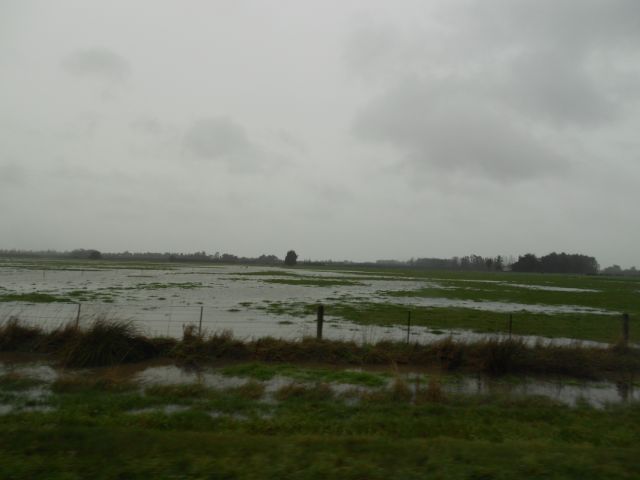
My host, Kevin, is the deputy mayor of an
area called Waimakariri. Just as has been the case in Belgium many
years ago, the villages merged, meaning that the present council is now
responsible for some 48000 inhabitants, living in an area of about 2200 square
km. Comparing that to West Flanders (with its 1.164.000 inhabitants in 3140
square km) it become clear what a large but sparsely populated area this is.
Being a deputy mayor in such bad weather conditions is not an enviable
position: all day long, Kevin is being contacted by people experiencing
problems with flooding.
It would be sheer madness to go walking in
this type of weather, so Kevin takes me for a tour of the area in his car.
Rivers, which are normally meandering harmless through the landscape, are
instantly transformed into fast-flowing rivers, overflowing their banks
everywhere. Cattle and sheep are looking dazed at so much wetness surrounding
them: the quadrupeds are facing a long and very wet night
Something very typical for this area are
the shelter belts: pine trees grown as a high hedge. Initially used to break
the wind but at the same time providing shelter for the cattle. However, in the
given weather conditions, even shelter belts can not fulfil this task : this is
a situation of hoping for quick improvement.
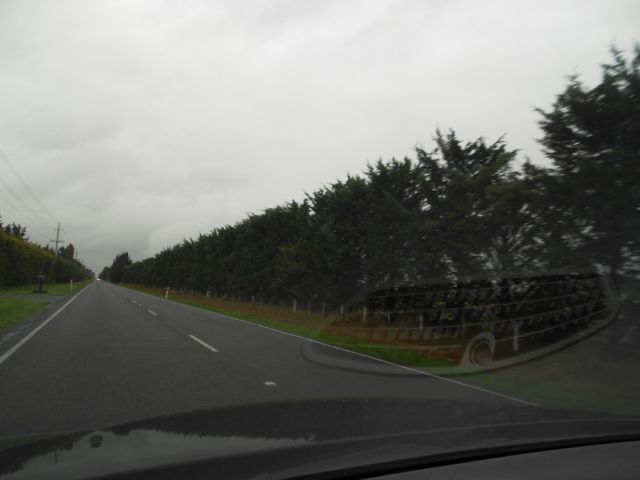
Milk and other agriculture products
represent the bulk of NZs export: no wonder that investments are being made in
this sector. Although, I can not deny that this sometimes leads to strange
situations. What to think of a cow tunnel under the main road? Because the
flock of a local farmer was gradually increasing in size in combination with
the fact that part of his meadows were across a busy road, it was decided to
construct a tunnel under the street. Not a matter of providing more safety for
the cows of course, more a case of providing an answer to motorist becoming
more and more impatient.
Another surprise to me was the size of the
irrigations systems : huge installations which can be as long as 2 km! All wheels are
individually controlled by a computer because the giant system runs around in a
semicircle. Top of the bill is a recently installed system that simply goes
over the house! No dirt of that roof ever
but laundry that has to dry in the
tumble dryer is the price to be paid.
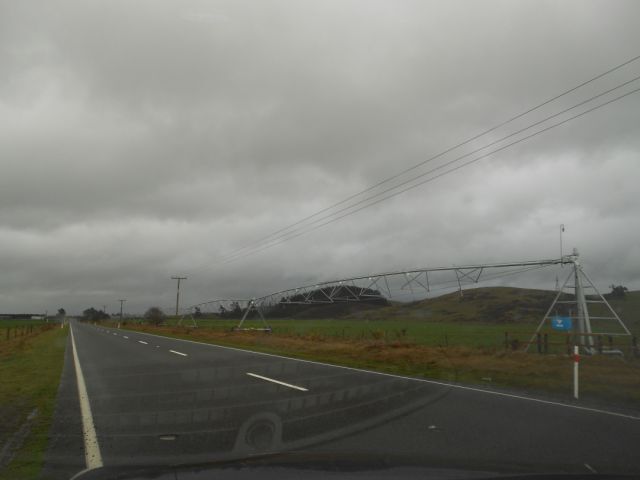
Another country, so other laws. On our way,
we passed a farm that was divided into building lots, making 25 lots of 5 acres available for hobby
farmers. No endless procedures to change the use of the land here: down under
one seems to be using common sense in a better way
After having spent 2 night at Kevin and
Marees house (who eagerly look forward to their first European trip) I end up
to visit Murray, who takes me to his sister later in the day. In the company of
a sociology professor, I am guaranteed of an evening filled with interesting
discussions about society, different culture and
life tout court.
Raylee is a native resident of the
devastated city, which Christchurch
still is. She takes me on a walking tour through the old town centre: it turns
out to become an account of what is already gone and what is still there to be
demolished. Tears spring to her eyes when referring to the groundswell of
support that came to Christchurch
in the weeks after the devastating earthquakes. Since there were no casualties
after the first heavy shock in September 2010, the locals were left with a
false sense of security. The second big earthquake in February 2011, came as a
huge shock. None less than a 185 people died, most of them in 2 towers which
had collapsed as a house of cards.
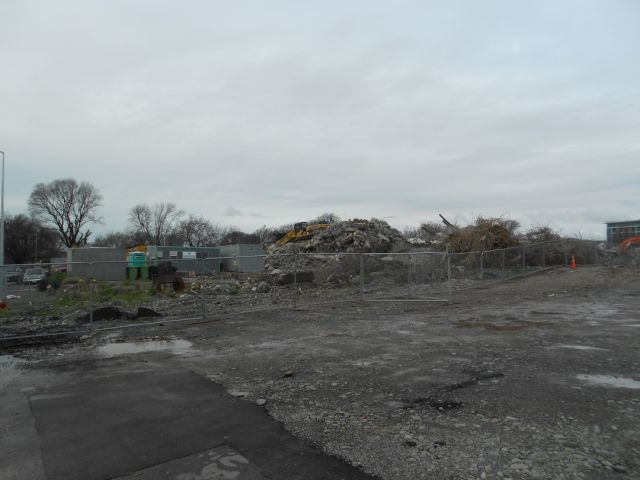
Cranes are working day and night, seven
days a week. Entire neighbourhoods are closed to city dwellers with soldiers in
place to make sure that no one passes these points unauthorised.
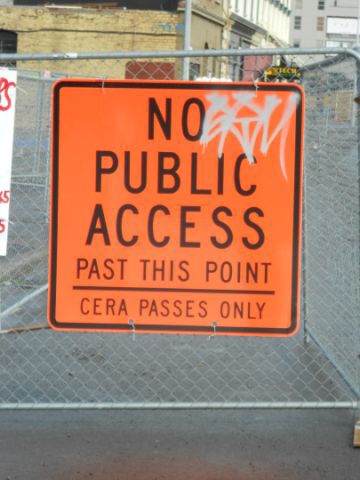
It is a sad story: the story of a whole
city which disappears of the map, taking many precious memories with it.
Fortunately, people have a resilience that can not be underestimated. Making
sure that businesses could keep on going, a shopping centre made of sea
containers, has been built in the centre of town: coloured containers, brought
together in a random way, were very artistically converted into shops and
coffee shops. Sad to hear that a Brit has put down a complaint because he felt
that his idea was stolen. Having started a shop in a container in
Great-Britain, he consider to hold the exclusive rights to this concept. Run to hell is the anser the Kiwis have,
most rightly, given him
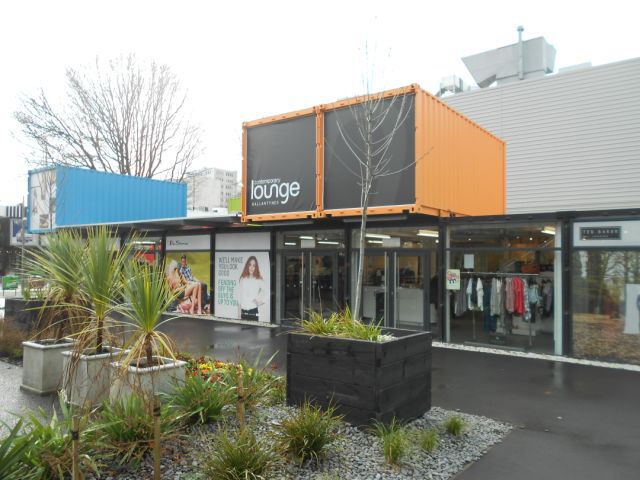
I cant believe what I see next: further
down the street, I spot a man in a medieval outfit. Intriguing enough for me to
approach him in order to find out what he is up to. It appears to be the town
crier, proclaiming the news, three to four hours a day. He adds in a cynical way that his job now
mainly exists to announce one or other exhibition in a particular building,
followed by the announcement that the building is not accessible until further
notice
Black humour
every deals with the tragedy in their own way.
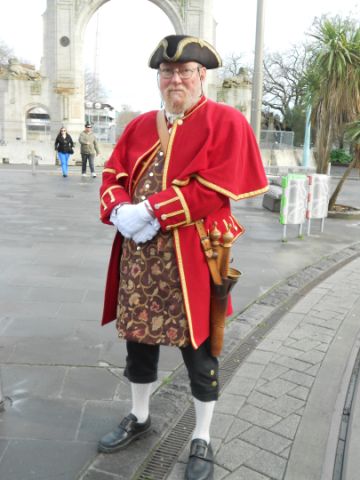
My trip would even render a hardcore
Bedouin jealous
Off I go again, on my way to my next hosts: Michael and Lesley
welcome me with great warmth in their beautiful home. I soon come to learn that
Michael has planned to fill my days in a useful way as I am taken to meet two
history professors at Canterbury
university. A visit which ends up to be so much more than a pure history
lesson: these people have given me advice, of which I know it will determine my
future a great deal. To be continued
Bedtime for me: with loads of new
impressions stored in my mind, I know it will be a relaxing sleep.
Best wishes,
Charlotte
Copyright: Charlotte Descamps 2012
|
